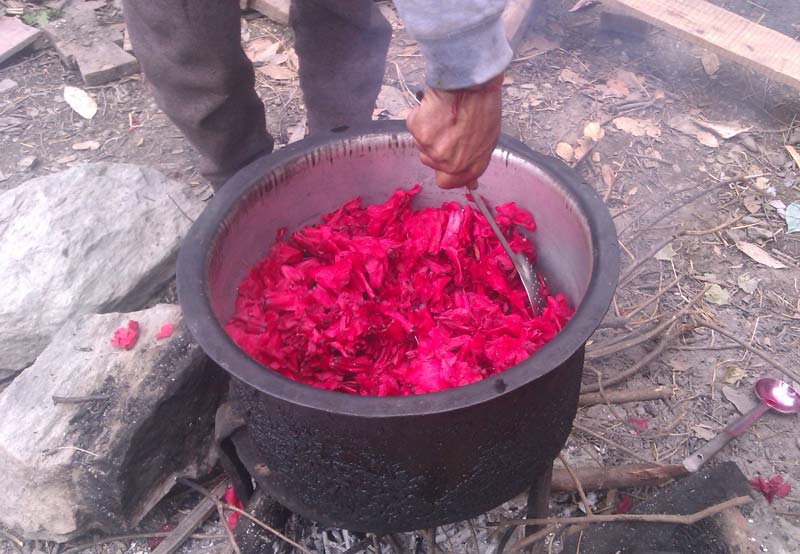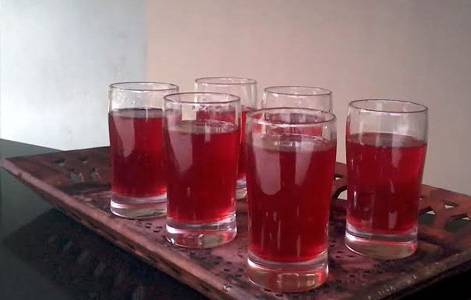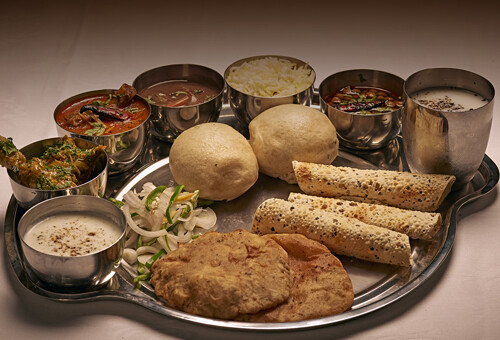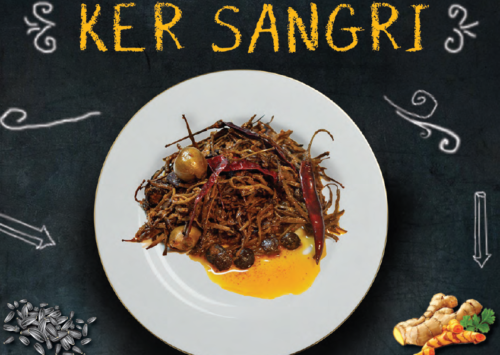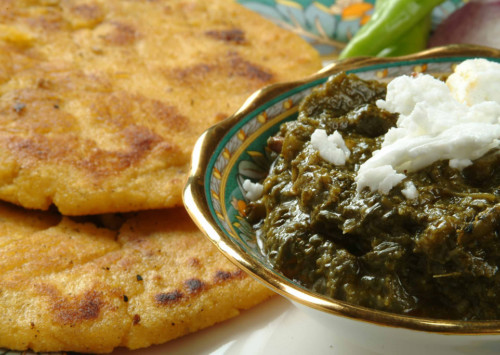The goodness of the Rhododendron arboreum
The bright-red, bell-shaped flower of the Rhododendron arboreum tree has more to it than aesthetics that it grants to the valleys it is found in. It gives the locals a unique food culture and dose of good health in the form of delectable savouries.
The great Himalayas are the abode of many wonders and secrets that they hide in their laps. Some explored, some yet to be, there are treasures hiding in the petals of flowers and the fallen leaves. Come discover…
Found in the hilly regions of Uttarakhand and Himachal Pradesh, the Rhododendron arboreum tree bears a bright scarlet red, bell-shaped flower. A blossom of the months of January to March, the tree grows up to 20 metres in height and is a delight to look at. The bold colour of the flowers on it pops out from the greens and browns of the neighbourhood, but its qualities are beyond its aesthetics.
Commonly known as burans or buransh, the flower holds a host of medicinal properties and a sweet nectar, which is why the locals love to use in the preparation of locally relished savouries. It is used for making refreshing drinks, parathas (Indian bread), chutney (Indian sauce), pakoras (bread or veggies coated in a batter of gram flour and deep fried), locally brewed wine and more.
The refreshing buransh juice, which looks like a regular glass of rose or raspberry drink, is actually jelly-like in texture and a dose of goodness, bottoms up. Rich in potassium, calcium, iron and vitamin C, it is taken as an appetiser, as an anti-oxidant and also to cure mountain sickness.
The locals also consume the flower, in the form of chutney, to treat seasonal sickness that comes with the winter months. Eaten with rice, the chutney is prepared by blending buransh petals, tamarind, green or red chillies and garlic. The chutney goes well with the parathas and pakoras too.
Said to cure headaches and stomach ailments, recent research shows that the flower is also a great anti-diabetic, antioxidant, anti-inflammatory and antimicrobial. A dose of goodness, buransh can be intoxicating and harmful if consumed in excess. Nonetheless, it continues to be a favourite of the locals who consider the flowers as spiritual and use them for religious practices. Not just this, the smoke released by the burning of buransh tree’s wood is considered to be purifying in Himalayas. The wood from the tree is also used in making artefacts.
A popular, indigenous plantation the produce of buransh is enjoyed by locals all through the year as they store the flower in the form of juice, jelly or squash. Try these recipes to enjoy the wonders of buransh.
Buransh Juice
Collect two kg of the flower, remove the internal parts (stigma, pistil). Wash them with fresh water.
Put three litres of water in a large pan, add the cleaned flowers, bring to a boil and simmer. Now add one tea spoon of baking soda (sodium bicarbonate).
Mix the flowers in boiling water. After about 15 to 20 minutes, the flowers will give out most of their juice, colour and aroma to the water. This is the time to sieve the ‘flower soup’.
When the flowers have cooled down, more of its juice can be extracted by pressing them with hands.
Add 2.5 kg of sugar to it and simmer again for 15 minutes. Then remove the pot from the fire and added 40 g of citric acid as preservative and for enhancing the taste.
To drink it, just mix a dose of the extract with double or triple dose of water.
Buransh Chutney (sauce)
Ingredients Quantity
Buransh Five-six flowers
Coriander One bunch
Mint Half a bunch
Sesame Seeds Two tablespoon
Chopped onions Two tablespoon
Chopped ginger One teaspoon
Lemon juice Two teaspoon
Salt As per taste
Honey Half tea spoon
Procedure
Blend buransh flowers, fresh coriander, and fresh mint after washing them properly.
Toss sesame seeds in a pan over heat and add to the blender.
Add chopped onions, ginger and blend to achieve desired consistency of sauce or chutney.
Remove to a serving bowl and add salt, lemon juice and honey. Mix well.
Buransh Paratha (bread)
Ingredients Quantity
Wheat flour Two cups
Gram flour Half a cup
Chopped buransh Half a cup
Chopped onion Two tablespoon
Chopped fresh coriander One teaspoon
Grated ginger One teaspoon
Salt As per taste
Turmeric powder Half teaspoon
Chopped green chilly (Optional)
Procedure
Sieve the flour and gram flour together and mix together all the ingredients.
Add water and knead to till the dough becomes stiff.
Make a dough ball of approximately 60 gm and then roll it out with a rolling pin.
Cook it on a flat frying pan, apply ghee and cook till done.
Serve with pickle and yogurt.
(With inputs from executive chef and manager Harish Sharma, Aamod resorts, Shogi, Himachal Pradesh).

